Now back from this week’s Botany 2016 meeting in Savannah, Georgia, I have some photos to share with you. As I mentioned in the previous post, meetings like this provide us with a number of benefits — connecting with colleagues, seeing what others are doing in research, and just experiencing a new city. I had not been to Savannah before and I enjoyed it. The famous garden squares that the city is built around give it a unique feel. The meeting was well-attended and had an especially large component of presentations about outreach from academic units to the broader public — something that we are trying to do with this blog.
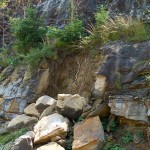
I could not resist stopping along the highway on the way down to photograph this rock face that had been dislodged by roots growing into a crevice and ultimately causing it to fall, illustrating the power of plants!

Savannah is a port city, near the Atlantic Ocean and served by the Savannah River, meaning the the city sees a lot of large container ships; here is a view of part of the city from the convention center at which our meeting was held.
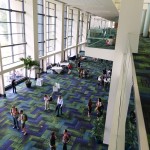
These meetings are held at large convention centers these days, as opposed to college campuses, where we used to meet. It is convenient in that all of the presentations are closer together and there are large open spaces for meeting with colleagues, as shown here.
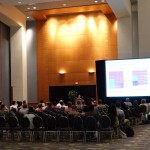
Most of the formal exchange at a meeting like this consists of talks presented by the attendees; you can do a lot of sitting throughout the day.
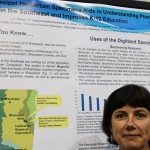
Posters are also a popular way of presenting your research results. Here, a former student in our program, Dr. Lisa Wallace, explains the status of the Mississippi herbarium databasing effort.

Paul Blischak, one of our current EEOB students, explains some of his work during the poster session.
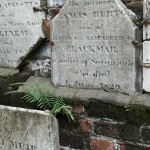
Savannah is famous as the setting for John Berendt’s novel Midnight in the Garden of Good and Evil. Local cemeteries are not only historic and atmospheric, but also reveal plants growing wherever they can — here in a brick wall.
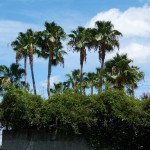
The fact that the Palmetto (Sabal palmetto) is frequent and native in the area reminds us that we are approaching the subtropics and tropics, home to most palm diversity.
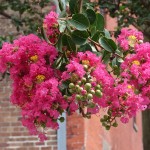
Although not native to the US, the Crepe Myrtle (Lagerstroemia) is used widely in plantings in the south as a street tree and provides a lot of color.
About the Author: Dr. John Freudenstein is a Professor in the Department of Evolution, Ecology and Organismal Biology and Director of the OSU Herbarium.
The site is accessible and user-friendly.Pututogel